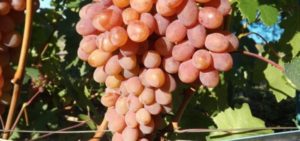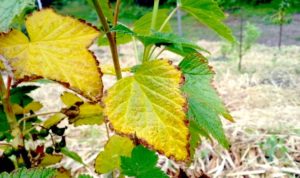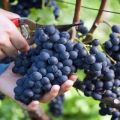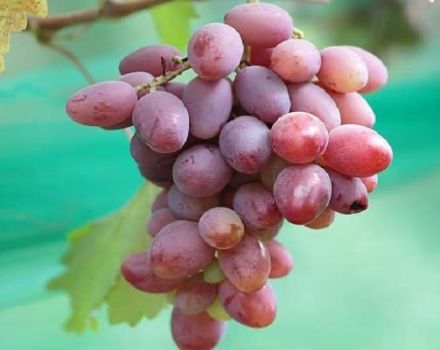Description and characteristics, pros and cons of Zest grape varieties and growing rules
Novice and experienced gardeners are advised to pay attention to the characteristics of the Raisin grape, which has attractive qualities - taste and appearance. The fruit is often used to make raisins. It is necessary to prepare for some difficulties, growing a culture is not easy and will require a lot of effort and skill.
The history of breeding the variety Izuminka
The variety Raisin was obtained by crossing grape cardinal and Chaush. A hybrid was bred in one of the Ukrainian institutes several decades ago. The name of the grape was not in vain, the fruit makes delicious raisins.
Features of culture
Like all grape varieties, Zest has a number of advantages and disadvantages, which it is better to familiarize yourself with in advance in order to avoid annoying shortcomings.
pros
Raisin has many advantages, so even the difficulties in leaving do not stop berry lovers. Among the pluses:
- the taste of berries;
- juiciness of fruits;
- universality of application;
- the size of the brushes;
- a stable increase in yield (the size of berries and the number of brushes increase every year);
- transportability;
- saturation of fruits with sugar, useful elements.
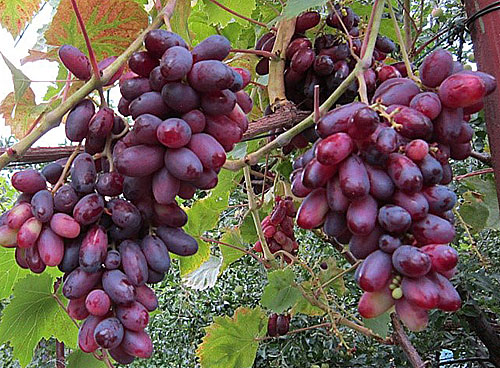
The advantages include the speed of development of the bushes - with proper care for the year, grapes give an increase in shoots of up to 40 cm.
Minuses
There are also many disadvantages of the Izuminka variety. The grapes are capricious, they require a nutrient-rich soil composition, the regular introduction of nutrients. Weak immunity is another drawback of culture. You will have to regularly apply chemicals against infection with infectious diseases.
External description of grapes
There is nothing remarkable in the external characteristics of the variety, but it is better to read the description in advance.
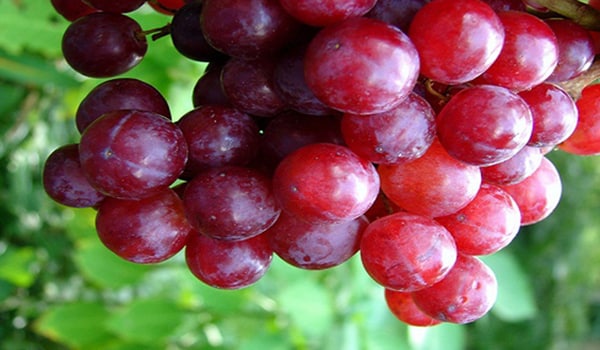
Bush and leaves
The Raisin bush is powerful, grows quickly, gives a lot of lateral growth, which is recommended to be removed. The leaves are medium, five-toed, with a downy down. The shade of the foliage is dark green.
Type and taste of berries
The berries are large, oblong. The weight of a bunch often exceeds half a kilogram. The pulp is dense, sweet, the skin is thin, easily bites. The shade of the brush is maroon.
Characteristics of the variety
It is recommended to understand the characteristics of the variety in advance, this will allow you to cope with the cultivation of grapes with dignity.
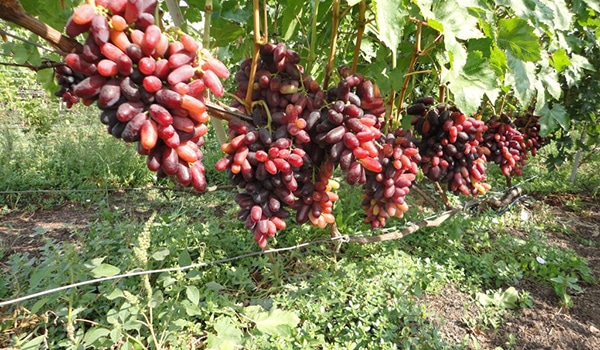
Frost resistant
The variety does not tolerate wintering well, therefore it is recommended to use a shelter. Already at a frost of 20 degrees, the culture can die.
Yield
The zest gives an excellent harvest (more than 100 centners per hectare), but this applies only to adult grape plants that have received proper care. Young bushes give only a few kilograms of fruit.
Disease immunity
When growing grapes Zest will have to face numerous diseases, the variety is susceptible to almost all infectious diseases of fruit crops. The use of chemicals for prevention will partially avoid damage to the bushes.

In which areas is it recommended to plant
Growing Raisins is recommended in temperate or warm climates. In harsh conditions, the bushes will not survive even under warm shelter.
Growing rules
Much depends on strict compliance with the requirements for planting young bushes.
Planting cuttings
Planting cuttings is recommended in the spring. Send planting material to open ground, cover with a plastic bottle or build a greenhouse. Roots appear in 3-5 months. Caring for cuttings is simple - regular watering and airing.
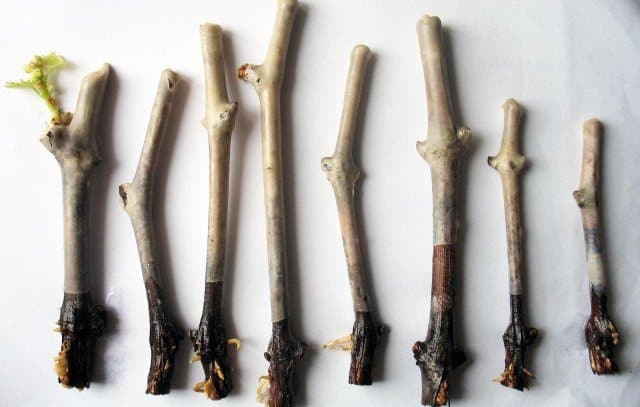
Care of a young seedling
It is easy to care for a young seedling - to provide the necessary amount of moisture, nutrients, to protect from adverse external influences.
Features of agricultural technology
The main rule that is recommended to be applied in the cultivation of Zest grapes is to adhere to all the requirements of agricultural technology.
Irrigation mode
It is recommended to moisten the soil weekly during a warm season. The amount of water for one Raisin bush is up to 20 liters. Loosening of the soil is imperative, this will allow moisture to penetrate deeply to the roots.
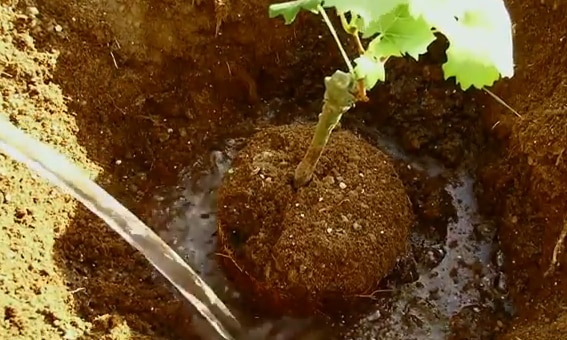
When and how to fertilize
Top dressing should be applied three times per season. It is recommended to use complex formulations with a predominance of potassium. The lack of an element will lead to a decrease in the growth rate and the appearance of small brushes.
Pruning and garter
The zest gives a strong increase, so you can't do without annual pruning. Remove thickened, dry shoots, after wintering, inspect the plant and cut out frozen vines.
Seasonal treatment for disease and pests
From the appearance of buds to the formation of ovaries, it is recommended to carry out preventive treatments against diseases, insects. Home remedies will not bring the desired effect - use chemicals.

Shelter for the winter
For winter shelter, use spruce branches, chopped straw, and special textiles. It is imperative to lay the vines on a thick "pillow" of needles, which will prevent damage to the whips by melt water.
In winter, hilling with snow - a snow shelter will protect the grapes in severe frosts. With the onset of spring, clear out the snow, melt water can cause rotting of plants.
Fruiting period
The variety belongs to crops of medium ripening periods, you need to go for the first fruits in mid-August. Remove the brushes carefully using garden shears. Send for processing or storage immediately after harvest.
In a cool room, Zest grapes can be stored for up to one and a half months. Pre-sort the berries, leave only dense, fully ripe brushes for storage. Grapes Zest is not in vain appreciated by gardeners for its qualities; in taste, this type is confidently leading among table and dessert grape varieties. Disadvantages in cultivation, exactingness and capriciousness of the bushes are minor trifles that are compensated by delicious taste and persistent aroma.
